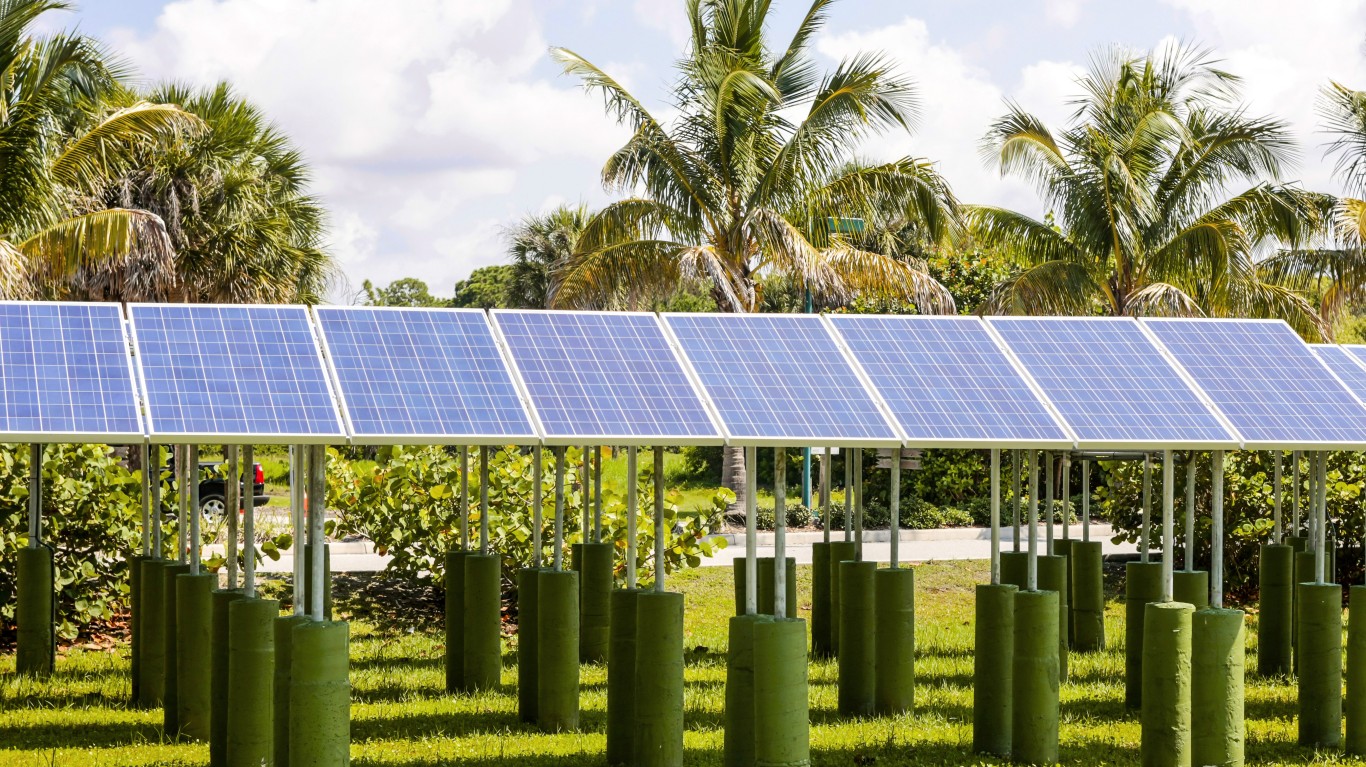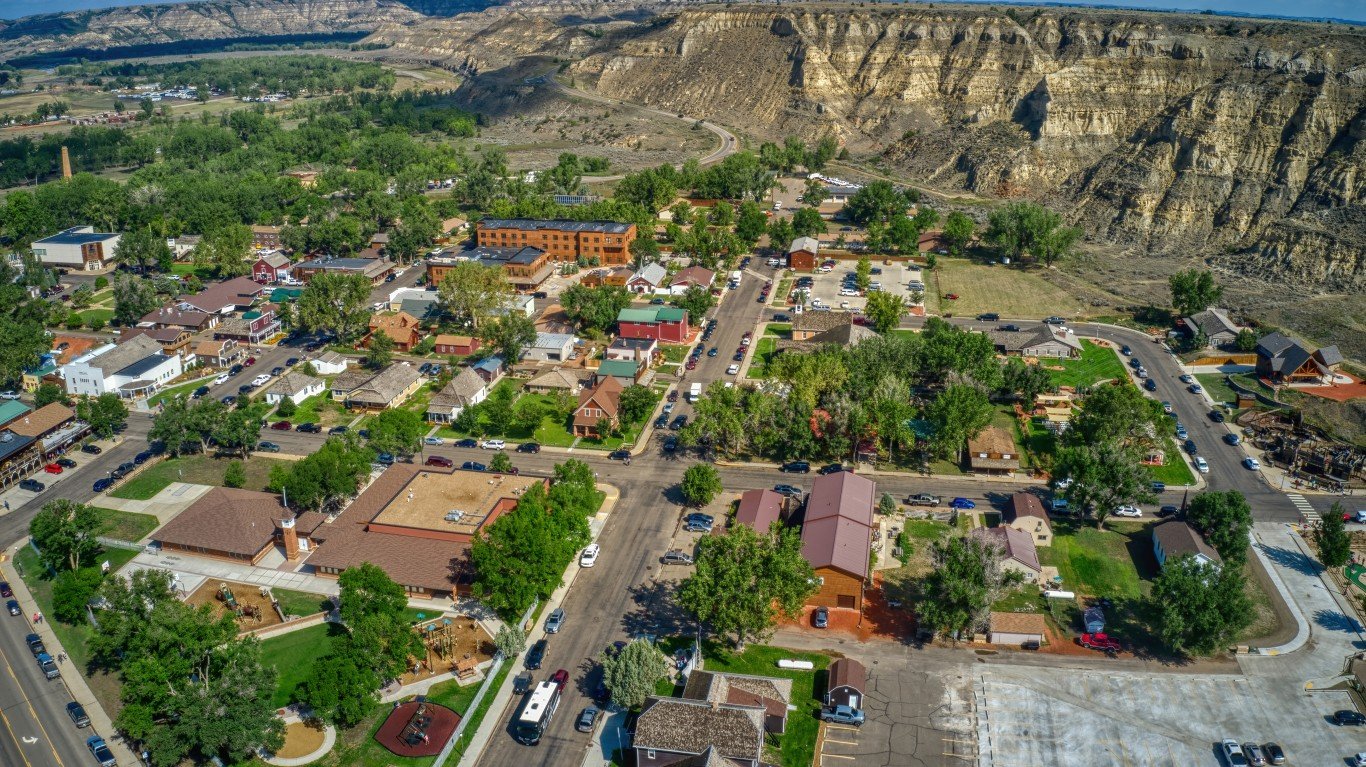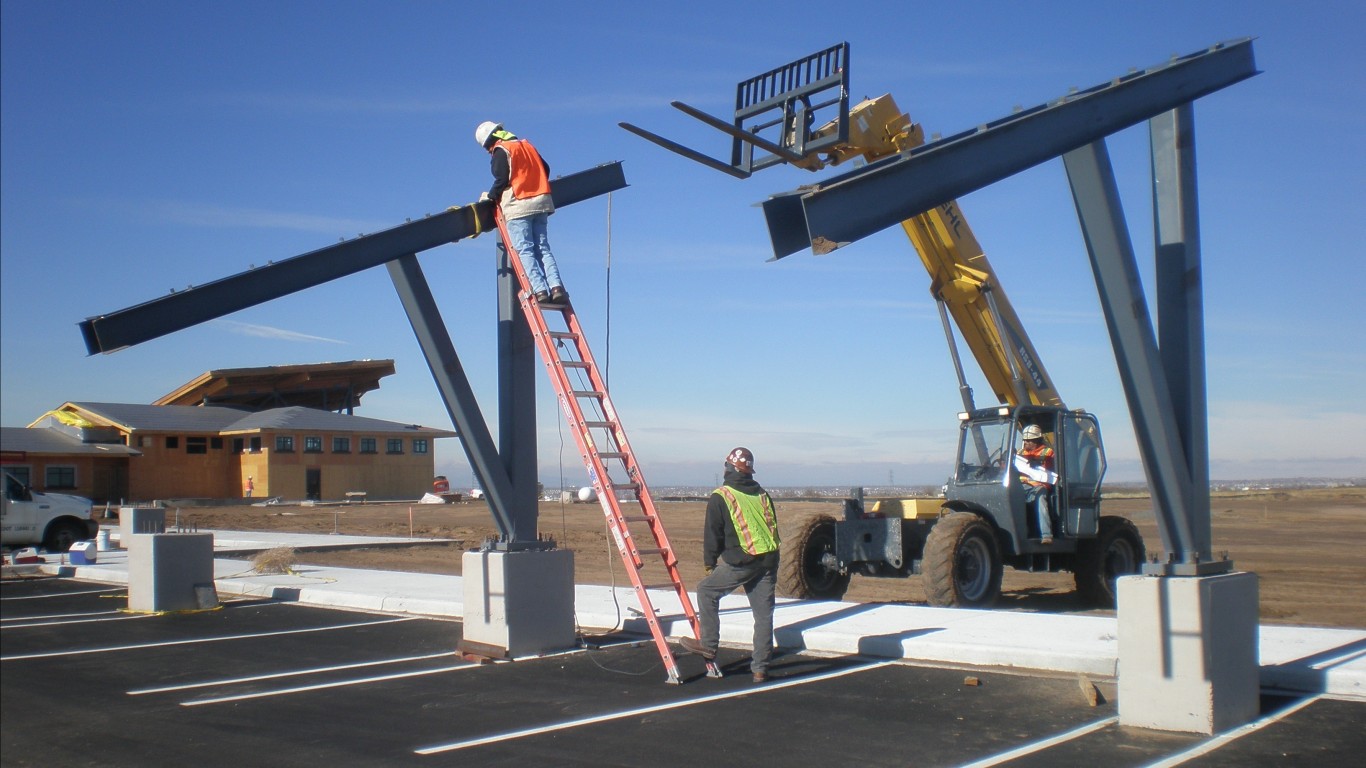
8. Florida
> Potential jobs created under Inflation Reduction Act in 2030: 1 for every 261 people (84,592 total)
> Potential new jobs as a share of current unemployed population: 27.0%
> Unemployed population in 2022: 313,266 (2.9% of labor force)
> Energy-related carbon dioxide emissions in 2021: 10.4 metric tons per person (29.9% lower than avg.)

7. Washington
> Potential jobs created under Inflation Reduction Act in 2030: 1 for every 261 people (30,273 total)
> Potential new jobs as a share of current unemployed population: 18.0%
> Unemployed population in 2022: 168,024 (4.2% of labor force)
> Energy-related carbon dioxide emissions in 2021: 9.5 metric tons per person (35.6% lower than avg.)
6. Colorado
> Potential jobs created under Inflation Reduction Act in 2030: 1 for every 260 people (22,742 total)
> Potential new jobs as a share of current unemployed population: 23.4%
> Unemployed population in 2022: 97,094 (3.0% of labor force)
> Energy-related carbon dioxide emissions in 2021: 14.7 metric tons per person (0.7% lower than avg.)

5. Nevada
> Potential jobs created under Inflation Reduction Act in 2030: 1 for every 260 people (12,251 total)
> Potential new jobs as a share of current unemployed population: 14.6%
> Unemployed population in 2022: 83,646 (5.4% of labor force)
> Energy-related carbon dioxide emissions in 2021: 12.5 metric tons per person (15.3% lower than avg.)

4. North Dakota
> Potential jobs created under Inflation Reduction Act in 2030: 1 for every 258 people (3,106 total)
> Potential new jobs as a share of current unemployed population: 35.6%
> Unemployed population in 2022: 8,731 (2.1% of labor force)
> Energy-related carbon dioxide emissions in 2021: 72.7 metric tons per person (391.0% higher than avg.)






